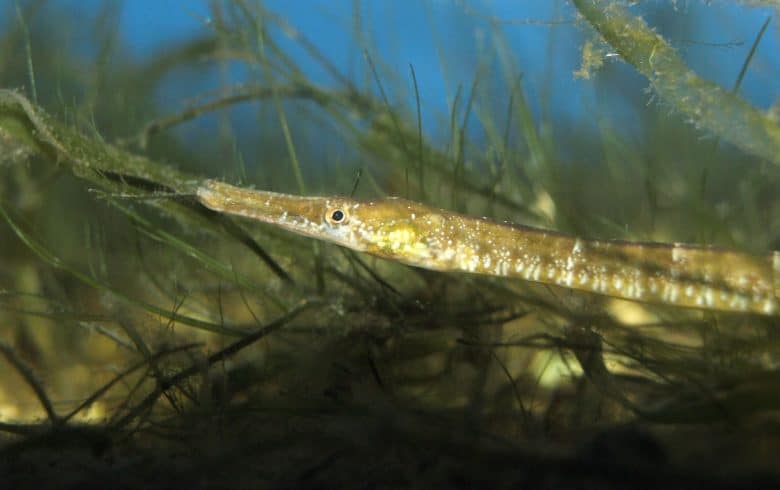
The great or greater pipefish is a member of the Syngnathidae family. It lives in Posidonia seagrass and cymodoceaceae meadows or on sandy bottoms at depths down to around 100 metres. In these meadows, its elongated body and grey-brown colour with yellow, pink or greenish hues provide perfect camouflage among the leaves, allowing it to surprise small crustaceans and fry that pass within its reach. It can measure forty about centimetres long. This Mediterranean fish is also found in the Black Sea and in the Atlantic, all the way from Norway to South Africa.
Phylum: Vertebrates
Class: Osteichthyes
Order: Syngnathiformes
Family: Syngnathidae
Scientific name: Syngnathus acus
French: Aiguillette
Spanish: Mula
Italian: Pesce ago
German: Grosse Seenadel






















